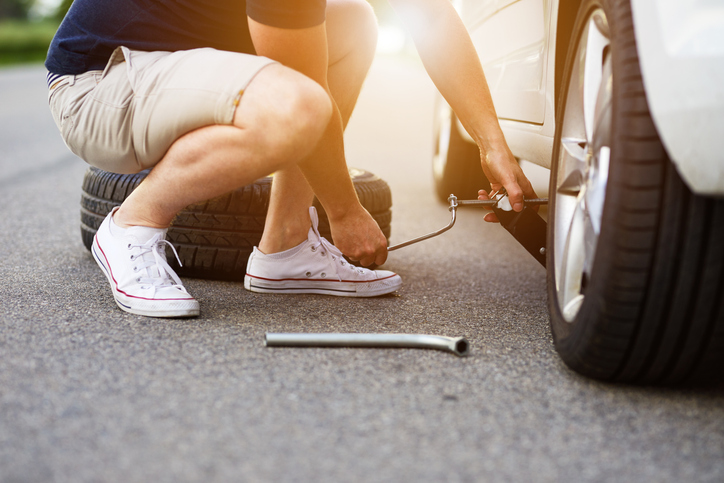What Automotive School Grads Should Know About Putting on a Spare Tire
Flat tires are among the most common car problems. When a car has a flat tire, drivers need to pull over safely to the side of the road and either call a towing service or install their spare tire. As an automotive school grad, knowing how to put on a spare tire should be one of your most basic skills.
Fortunately, putting on a spare is actually not that difficult and pretty much anyone can do it if they have the right equipment and know-how. Read on to learn the basics of putting on a spare tire, whether for your own vehicle or a customer’s.
A Few Things to Think About Before You Put On a Spare Tire
Before you go ahead and replace a tire with the spare, you’ll want to think about a couple of things. First of all, what exactly happened to the car? If it was involved in a collision or if it exited the road, then the vehicle may be too damaged for a spare tire. If you place a spare tire on a bent axel, the vehicle will not be safe to drive. As an automotive school grad, you should also know to verify if the headlights and turnings signals are functioning properly before putting on a spare. If they are not, then the tire should not be changed and instead a mechanic should be called.
The last thing to consider is when the situation is happening. Changing a flat tire in the middle of the night or in a storm is difficult. It also places you in a dangerous situation as other vehicles might not be able to see you.
Automotive School’s Step-by-Step Guide to Putting on a Spare Tire
Let’s look at the steps of putting on a spare tire for students in automotive trade schools.
Step 1. Find the spare tire and required tools. The tire itself, a jack, and a tire iron can usually be found in the trunk.
Step 2. Use the tire iron to loosen the lug nuts while the car is still on the ground, but do not remove them yet.
Step 3. Using the jack, you need to lift the car so you can create enough room for the flat tire to be removed and the spare tire to be installed. Note that cars will have a precise section of the body with reinforced padding where the jack should be set up. Consult the user’s manual to find this section. If you try to install the jack elsewhere, you might pierce the car.
Step 4. Once the car is lifted about an inch off the ground, you can safely remove the lug nuts, and then the tire. Once the tire has been removed, you can install the spare. To do this, line up the holes with the studs.
Step 5. Once the spare tire is in place, place all the lug nuts, but do not tighten them yet. Once all the lug nuts are in position, use the tire iron to tighten them. You should tighten them in a star pattern, and not in a simple clockwise pattern.
Step 6. Slowly return the car to the ground, and place the equipment and damaged tire in the trunk.
And remember: spare tires are a temporary solution to help get a car to a mechanic. A car should generally not travel more than 100 km and no faster than 80 km/h when on a spare tire.
Looking to pursue auto mechanic training in Ontario?
Contact the Automotive Training Centres today!



